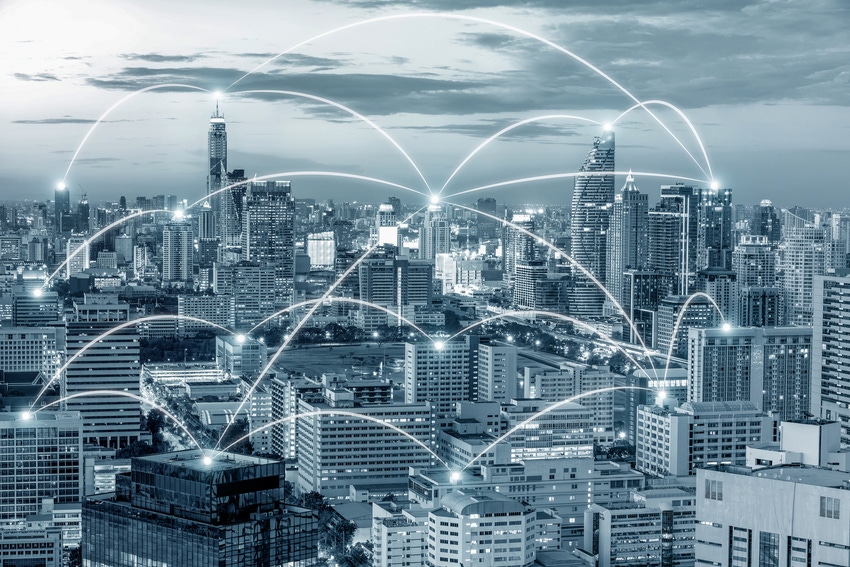As 5G networking looms on the horizon, telecommunications firms are poised to take advantage of what IoT and edge computing can offer.
September 21, 2018

Telecoms.com periodically invites expert third parties to share their views on the industry’s most pressing issues. In this piece freelance Journalist Charlie Osborne explores the role of edge computing in enabling the smart city.
Mobility has paved the way for the rapid adoption of the Internet of Things (IoT) and connected devices worldwide. At the core of IoT and edge computing technologies is mobile networking, which has given rise to Big data, analytics, and cloud computing taking over what was once on-premise and dumb enterprise systems and networks, ranging from security solutions to customer assistance platforms.
As 5G networking looms on the horizon, telecommunications firms are poised to take advantage of what IoT and edge computing can offer. Data demands and the thirst for spectrum have forced a rapid re-think in how telecoms firms manage their resources, prompting a shift towards cloud-driven architectures. Any technology which can lessen the burden of data consumption is worthy of note, and edge computing has the potential to drastically reduce the transfer and management costs of data.
Edge and Fog computing both bring data analysis and collection closer to the source, giving companies the option to reduce the bandwidth required to manage information, as well as reduce latency. Mobile operators can choose to store content which demands high bandwidth at network peripheral nodes, rather than force transfers to core systems at the heart of a network. In turn, this can reduce the workload of mobile networks.
Fog computing is poised to become a necessary element of future mobile networks, which will not only be faced with the challenge of catering for data-hungry consumers but will also need to support the ever-growing array of IoT devices and deployments in our cities through networks such as mobile LPWA, NB-IoT, and LTE-M. Local data storage and analysis provided by edge computing has a vast array of applications in the smart city arena, in which telecoms and mobile operators can benefit from.
Cities worldwide are expected to house an additional 2.5 billion new residents by 2050 and as populations grow, smarter solutions are required for sustainable urban living. Research suggests that the smart city market will be worth $2.4 trillion in 2025 but the core of this growth is dependent upon telecoms firms providing the support required for smart city IoT deployments through the adoption of fog and edge computing. Smart city use cases: Transport: Intelligent transport systems, ranging from smarter traffic lights to autonomous vehicles, have a place in smart cities.
Not only can IoT provide a way to improve traffic flows, but intelligent systems can improve road safety and reduce pollution levels. Vehicle-to-vehicle (V2V) communications, IoT sensors, GPS platforms, and RFID technologies all produce data and require rapid analysis to be fed back to connected devices in real-time. Fog computing and IoT, supported by mobile networks, provides the backbone to manage this information while reducing the risk of bottlenecks. In turn, telcos have the opportunity to secure fresh revenue streams in the automotive industry, an area of business once completely separate.
Smart energy grids: In order to replace aging water, gas, and electricity meters with more intelligent alternatives, smart cities require networks able to cater to low-power sensors spread over a vast area. Fog computing can act as a bridge between smart grids and cloud platforms for the purpose of collecting, computing and storing smart meter data before transmitting them to the cloud, improving the privacy and security of such sensitive data across a range of geographical locations. LoRa networks, which are able to support massive IoT deployments, are currently being rolled out to support smart energy grids and platforms by a number of telecommunications providers and ISPs.
Resident services: The concept of the smart city also includes ways to improve the lives of residents. These can include sensors for monitoring the environment, local services applications, and intelligent services for caring for the elderly or those with medical conditions.
As fog computing is able to cater for data processing across a variety of nodes in different areas in a secure fashion, this kind of architecture should be a top choice to support resident services, specially when sensitive data is involved. Many of these services focus on mobile devices as a point of entry, which, in turn, can be harnessed by telcos to create fresh revenue streams.
As our thirst for bandwidth deepens and our cities become smarter, mobile operators must have the capacity and infrastructure in place to support us. When our roads become managed through IoT and AI, bottlenecks can have a severe impact on safety & emergency services, and critical utilities cannot be interrupted, lest cities face the economic consequences.
As a result, telecoms firms will be held to a high standard in terms of speed and reliability. However, the smart city will also provide a wealth of opportunities for mobile operators to turn a profit.
Charlie Osborne is a professional journalist based in London, UK. She is a freelance editor, educational material creator and contributes to IoT World News as a feature writer with a focus on consumer technology, innovation, smart technology, mobility, edtech, and security.
Read more about:
DiscussionAbout the Author(s)
You May Also Like








.png?width=300&auto=webp&quality=80&disable=upscale)


_1.jpg?width=300&auto=webp&quality=80&disable=upscale)


.png?width=800&auto=webp&quality=80&disable=upscale)